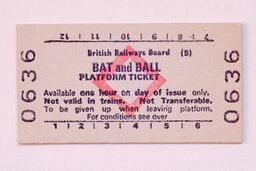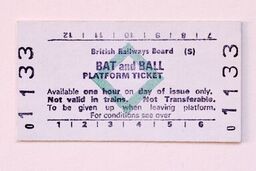Platform tickets
Published: 24 October 2018


Bat & Ball Station platform tickets, produced by British Railways Board.
A platform ticket is a type of rail ticket issued by some railway systems, permitting the bearer to access the platforms of a railway station but not to board and use any train services. It allows people to walk with their friends and loved ones all the way to the passenger car at stations where the public is not admitted to platforms.
History
Platform tickets emerged in the 19th century. At that time the doors to passenger coaches opened directly onto the platform and were not connected by an internal corridor, as they are today. In order to inspect tickets, conductors had to move along the outside of the train while it was in motion. Although trains moved much slower than today, there were numerous accidents. Therefore, railway operators began to check the tickets on the platform before passengers boarded the train. Passing these checkpoints required either a ticket for travel or the platform ticket, which was only valid for access to the platform. After railcars were changed, people and conductors could move from carriage to carriage so checking the tickets outside the train was no longer necessary. Most railway transport systems abolished this in the second half of the 20th century. As soon as there were no more checks, the platform ticket was unnecessary and generally was abandoned. (source: Wikipedia)